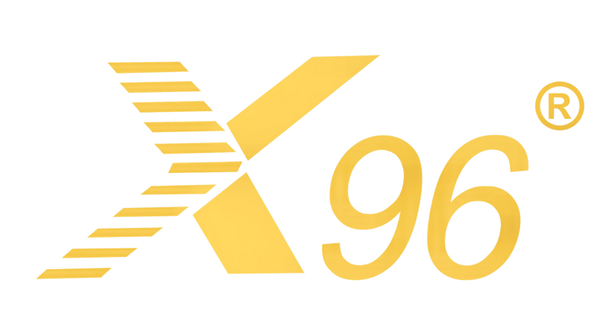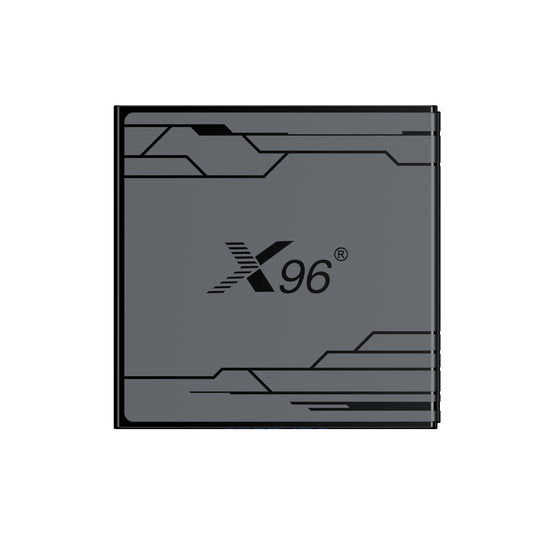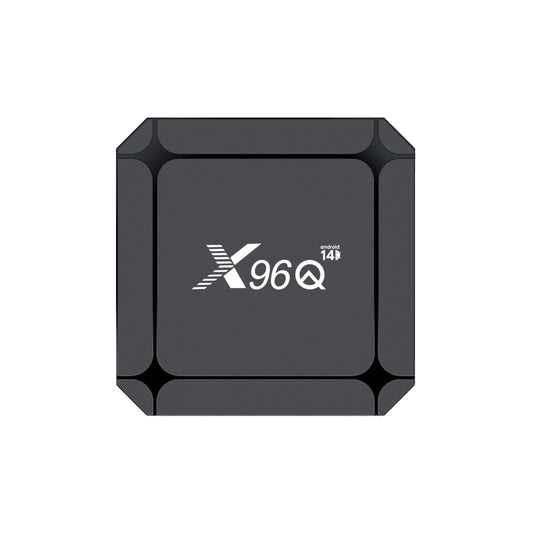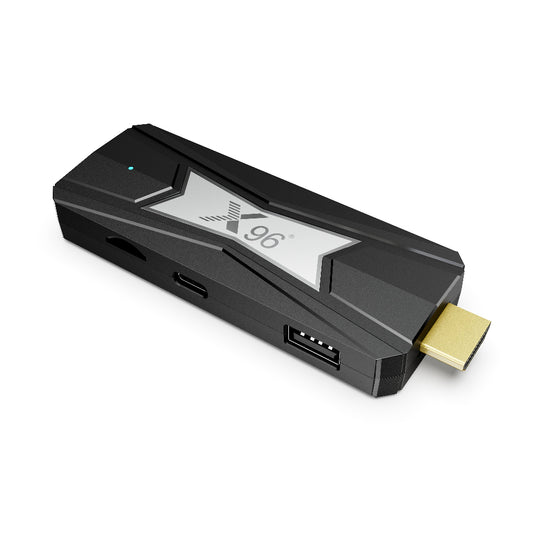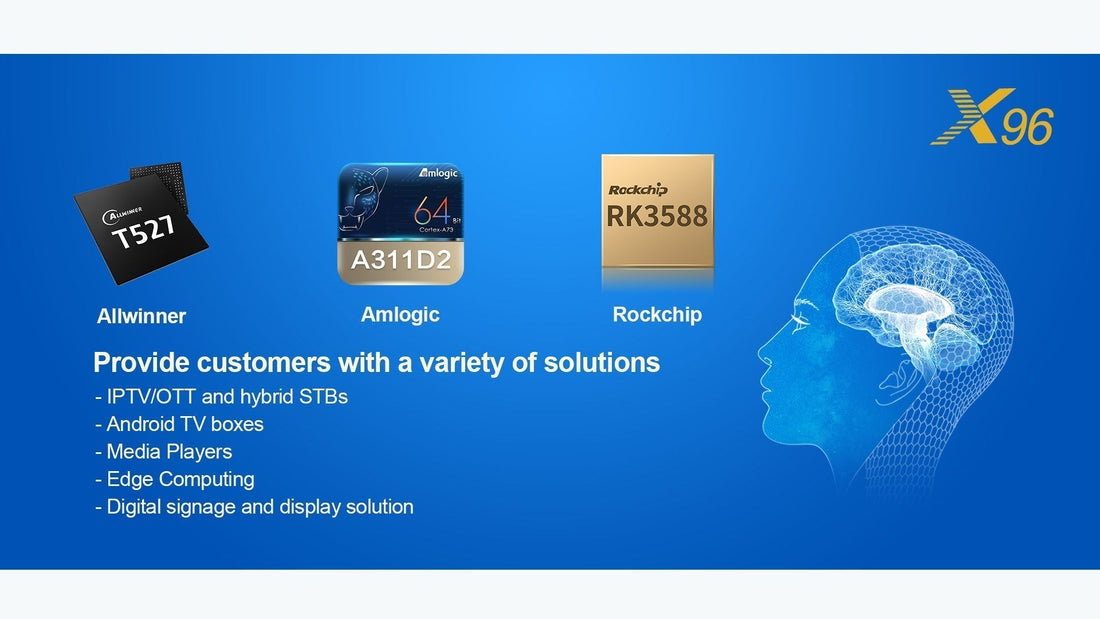
Custom/DIY Android TV Box——Build Your Own Android TV Box
Are you ready to unlock the full potential of your Android TV Box with Custom/DIY Android TV Box—Build Your Own Android TV Box and take customization to the next level? Whether you're exploring custom ROMs for Allwinner, Amlogic or Rockchip chipsets, designing a personalized launcher, or even building your very own Android TV Box from scratch, the possibilities are endless. With options like modified TV box software, development boards, and customized remote controls, you can create a truly unique entertainment experience tailored to your preferences.
1. Android TV Box Custom ROM
Allwinner H313/H616 Custom ROM

The Allwinner H313/H616 chipset, designed for Android TV Boxes, offers a great balance of performance and affordability, making it an ideal candidate for custom ROM development. Custom ROMs for the H313/H616 allow users to unlock advanced features, improve system performance, and tailor their TV box experience to meet specific needs. By replacing the stock firmware with a custom ROM, you can enable features such as enhanced user interfaces, better resource management, and even the addition of specialized apps or tools not supported by the original software. Whether you're a developer or an enthusiast looking to maximize the potential of your Allwinner TV Box, diving into custom ROM solutions opens the door to endless possibilities.
Allwinner H313 TV Box :
(1) X96Q Android 10 Allwinner H313 Quad Core TV Box
(2) X96 S400 TV Stick Android 10 TV Dongle
(3) X96Q Pro Quad Core Allwinner H313 Dual Dual WiFi TV Box
(4) X96 X5 Allwinner H313 Android 10 4K UHD TV Box
Allwinner H616 TV Box![]()
(1) X96Q Max Allwinner H616 Quad Core TV Box
(2) X96 Mate Quad Core Allwinner H616 TV Box
2. Android TV Box Custom Launcher
An Android TV Box Custom Launcher refers to a customized user interface (UI) designed to replace the default home screen of an Android TV Box. It tailors the look, layout, and functionality of the device’s home screen to meet specific branding, usability, or content-promotion goals. Unlike the stock Android TV launcher, a custom version can include branded visuals, curated app placements, personalized recommendations, and direct access to preloaded apps or services.
Benefits for Sellers:
1. Brand Differentiation: A custom launcher allows sellers to create a unique identity for their Android TV Box, standing out in a crowded market with a branded interface.
2. Enhanced User Experience: Tailor the UI to prioritize apps, streaming services, or features that align with user preferences, improving satisfaction and reducing returns.
3. Preinstalled Content Promotion: Sellers can highlight their own apps, partner services, or monetized content (e.g., preloaded streaming apps) directly on the home screen, driving engagement and potential revenue.
4. Reduced Competition: By locking the launcher (if desired), sellers discourage users from switching to competing platforms or services.
5. Customer Loyalty: A polished, user-friendly interface increases the likelihood of repeat purchases or recommendations.
6. Data Insights: Integrate analytics to track user behavior (e.g., app usage trends), helping sellers refine marketing strategies or partnerships.
7. Monetization Opportunities: Charge third-party apps or services for prominent placement on the home screen (e.g., ads, sponsored app slots).
7. Control Over Updates: Sellers can manage software updates and feature rollouts independently, ensuring compatibility with their ecosystem.
In summary, a custom launcher transforms the Android TV Box into a branded, revenue-generating platform while improving user retention and market positioning.
3. Custom Android TV Box OS
A Custom Android TV Box OS refers to a modified version of the Android operating system specifically tailored for TV boxes. It includes changes to the core software, user interface (UI), preinstalled apps, and system-level optimizations to align with specific branding, functionality, or market needs. Unlike stock Android TV OS, a custom OS can remove bloatware, add proprietary features, enforce regional compliance, or integrate third-party services directly into the system.
Benefits for Sellers:
1. Complete Brand Control: Embed logos, themes, and branding across the entire interface (not just the launcher), creating a cohesive brand experience.
2. Preinstalled Monetization: Preload apps, subscription services, or ad-supported platforms to generate recurring revenue (e.g., streaming apps, app stores).
3. Optimized Performance: Remove unnecessary background processes or bloatware to improve speed and stability, reducing customer complaints.
4. Regional Compliance: Customize the OS to meet local regulations (e.g., preinstalled government-mandated apps, censorship filters).
5. Exclusive Features: Add unique functionalities (e.g., voice control, gaming optimizations) to justify premium pricing.
6. Locked Ecosystem: Restrict access to competing app stores (e.g., Google Play) or sideloading, ensuring users rely on preinstalled services.
7. Partnership Revenue: Partner with content providers (e.g., streaming platforms) to preinstall their apps in exchange for fees or revenue sharing.
8. Enhanced Security: Implement custom security protocols to protect against piracy or unauthorized modifications.
7. Software Updates: Control over OTA updates to fix bugs, add features, or push promotions, keeping devices relevant longer.
8. Market Differentiation: Stand out with a tailored OS that caters to niches (e.g., gamers, Kodi enthusiasts, regional audiences).
Example Use Cases:
1. A seller targeting gamers could include preinstalled emulators, gamepad drivers, and gaming-centric UI tweaks.
2. A regional distributor might integrate local streaming apps and language packs.
In summary, a custom OS transforms the Android TV Box into a branded, revenue-focused platform while improving user retention and competitive edge.
4. Custom TV Box Development Board
A Custom TV Box Development Board is a purpose-built hardware platform designed to facilitate the development, testing, and production of tailored Android TV Boxes. It serves as the foundational circuit board (PCB) that integrates critical components like processors (SoC), memory, connectivity modules (Wi-Fi/Bluetooth), ports (HDMI, USB), and other hardware features. Custom development boards allow sellers to control the device’s hardware architecture, enabling unique performance optimizations, feature integrations, and cost adjustments for specific markets or use cases.
Benefits for Sellers:
Hardware Customization:
(1)Tailored Specifications: Choose components (e.g., chipsets, RAM, storage) to balance performance, power efficiency, and cost (e.g., using an Amlogic S905X4 for 4K/AV1 decoding or a Rockchip RK3566 for AI applications).
(2)Feature Integration: Add specialized hardware like dual-band Wi-Fi 6, Ethernet ports, IR receivers, or expandable storage slots to meet niche demands (e.g., gaming, IPTV, or IoT hubs).
Cost Optimization:
(1)BOM Control: Adjust the Bill of Materials (BOM) by selecting components that align with target pricing (e.g., using cheaper DDR3 RAM for budget models or premium LPDDR4 for high-end devices).
(2)Scalability: Reuse the same board design across multiple product tiers (e.g., base vs. premium models) to streamline production.
Market Differentiation:
(1)Unique Selling Points (USPs): Integrate rare features like hardware-accelerated AI for voice assistants, HDMI 2.1 for 8K support, or USB-C PD for universal charging.
(2)Regional Compliance: Include hardware-level certifications (e.g., Dolby Vision, HDCP 2.3) or region-specific ports (e.g., AV-out for older TVs in certain markets).
Faster Time-to-Market:
(1)Pre-Validated Designs: Use modular development boards (e.g., Raspberry Pi Compute Module clones) to reduce R&D time and accelerate prototyping.
(2)Driver/OS Compatibility: Ensure seamless integration with custom Android OS builds or Linux distributions.
Partnership Opportunities:
(1)Co-Branding: Collaborate with chipset manufacturers (e.g., MediaTek, Allwinner) for exclusive hardware partnerships or promotional support.
(2)Content Partnerships: Design boards with dedicated hardware decoders for specific streaming platforms (e.g., Netflix 4K certification).
Future-Proofing:
(1)Upgradability: Design modular boards with swappable components (e.g., replaceable RAM/Storage) to extend product lifespans.
(2)IoT Integration: Include GPIO pins or Zigbee/Wi-Fi modules to position the TV Box as a smart home hub.
Quality Control:
(1)Thermal Management: Customize cooling solutions (e.g., heat sinks, fan placements) to prevent overheating in high-performance use cases.
(2)Durability: Select industrial-grade components for commercial/enterprise applications (e.g., digital signage).
Example Use Cases:
(1)Budget Models: A development board with a low-cost SoC (e.g., Allwinner H616), 2GB RAM, and basic 1080p decoding for emerging markets.
(2)Premium Models: Boards with Amlogic S928X chipsets, 8GB RAM, and HDMI 2.1 for 8K gaming/streaming enthusiasts.
(3)Commercial Use: Rugged boards with PoE (Power over Ethernet) and VESA mount support for digital signage in hotels/restaurants.

5. Custom TV Box Remote Control
A Custom TV Box Remote Control is a tailored input device designed specifically for an Android TV Box, offering unique hardware features, branding, and software integration. It replaces generic remotes with a purpose-built design that aligns with the TV Box’s functionality, user experience goals, and brand identity. Custom remotes can include specialized buttons (e.g., streaming service shortcuts), advanced controls (e.g., voice search, air mouse), or ergonomic layouts to enhance usability.
Benefits for Sellers:
(1)Brand Reinforcement:
Embed logos, colors, and design elements to create a cohesive brand experience.
Use premium materials (e.g., metal accents, textured grips) to elevate perceived quality.
(2)Enhanced User Experience:
Shortcut Keys: Add dedicated buttons for popular apps (e.g., Netflix, YouTube) or functions (e.g., screenshot, settings) to simplify navigation.
Voice Control: Integrate a built-in microphone for voice search or smart assistant compatibility (e.g., Google Assistant).
Air Mouse/Gyroscope: Include motion-sensing controls for easier web browsing or gaming.
(3)Market Differentiation:
Unique Features: Offer remotes with backlit buttons, touchpads, or programmable keys to stand out from competitors.
Niche Appeal: Design remotes for specific audiences (e.g., gamers, seniors) with simplified layouts or extra function buttons.
(3)Software Integration:
Pair the remote with the TV Box’s custom OS for seamless control (e.g., long-press actions, firmware updates).
Enable IR/RF/Bluetooth connectivity tailored to the device’s hardware.
(4)Cost Efficiency:
BOM Optimization: Choose components (e.g., IR vs. Bluetooth modules) based on target pricing.
Scalability: Use the same remote design across multiple TV Box models to reduce production costs.
(5)Reduced Returns/Support Costs:
Intuitive layouts and clear labeling minimize user confusion and support inquiries.
Ensure durability (e.g., drop-resistant, long battery life) to reduce warranty claims.
(6)Monetization Opportunities:
Partnership Promotions: Include branded buttons for partner apps/services (e.g., Disney+ or Spotify) in exchange for revenue sharing.
Premium Upgrades: Offer advanced remotes (e.g., with keyboard or RGB lighting) as paid add-ons.
(7)Localization:
Customize button labels or layouts for regional languages or preferences (e.g., dedicated "OTT platform" keys in specific markets).
(8)Future-Proofing:
Design remotes with upgradable firmware to support new features or app integrations over time.
6. Build Your Own Android TV Box
For businesses aiming to carve out a niche in the competitive streaming and smart home device market, creating a custom-branded Android TV box offers significant advantages
Why You Need To Build Your Own Android TV Box
Brand Differentiation
A branded TV box allows businesses to stand out in a saturated market. Custom logos, packaging, and UI/UX design reinforce brand identity and create a memorable experience for users.
Pre-installed apps or tailored features (e.g., streaming services, language settings) can cater to specific audiences, enhancing customer loyalty.
Control Over User Experience
Customization enables businesses to optimize the interface, remove bloatware, and integrate proprietary apps or services, ensuring a seamless and branded user journey.
Regular firmware updates can be managed to maintain performance and security, fostering long-term trust.
Revenue Opportunities
Preloaded apps, partnerships with content providers, or subscription services can generate recurring revenue streams.
Hardware upsells (e.g., higher storage tiers, premium remotes) allow for tiered pricing strategies.
Market Adaptability
Custom boxes can be tailored to regional preferences (e.g., language, local content) or niche markets (e.g., gaming, education), enabling businesses to target underserved segments.
Competitive Pricing & Profit Margins
By controlling specifications and avoiding licensing fees for unnecessary features, businesses can optimize costs and maximize margins.
How To Choose a Custom Android TV Box Manufacturer
To ensure a successful partnership, businesses should evaluate manufacturers based on:
Technical Expertise & Customization Capabilities
Software: Ability to customize Android OS (e.g., skinning, pre-installed apps, OTA updates).
Hardware: Flexibility in component selection (processors, RAM, storage, HDMI/Bluetooth/Wi-Fi standards).
Certifications: Compliance with regional regulations (e.g., FCC, CE, RoHS) and DRM standards (e.g., Widevine L1 for HD streaming).
Quality Assurance & Production Capacity
Rigorous testing processes for hardware durability, software stability, and thermal performance.
Scalability to meet bulk orders without compromising quality.
Reputation & Experience
Proven track record in Android TV box manufacturing, ideally with references or case studies.
Expertise in handling IP licensing (e.g., Google Mobile Services certification for Android TV).
Minimum Order Quantity (MOQ) & Pricing
Transparent pricing models and MOQs that align with your budget and market testing needs.
Avoid manufacturers with hidden costs for tooling, licensing, or customization.
Post-Sales Support
Warranty policies, firmware update support, and troubleshooting assistance.
Responsive communication channels for addressing defects or supply chain delays.
Ethical & Sustainable Practices
Ensure factories adhere to labor and environmental standards to avoid reputational risks.
X96——Professional Custom TV Box/IPTV /OTT /Digital Signage Player Manufacturer-Software and Hardware Customization.
